Creating a asteroid belt ( 2 different tutorials )
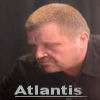 Atlantis
Posts: 133
Atlantis
Posts: 133
Hi...
Little tutorial for creating a asteroid belt..
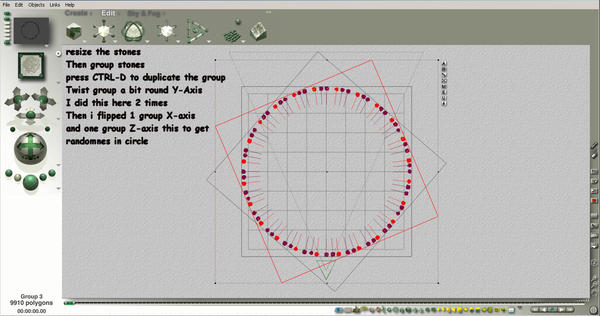

e.jpg
1364 x 718 - 203K
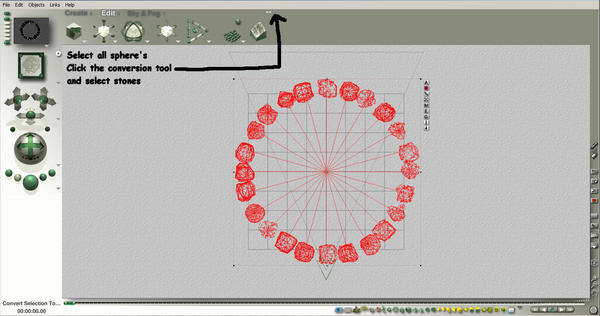

d.jpg
1364 x 718 - 212K
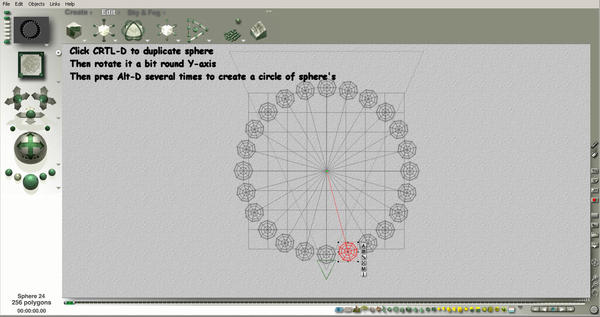

c.jpg
1363 x 719 - 185K


b.jpg
1363 x 719 - 171K
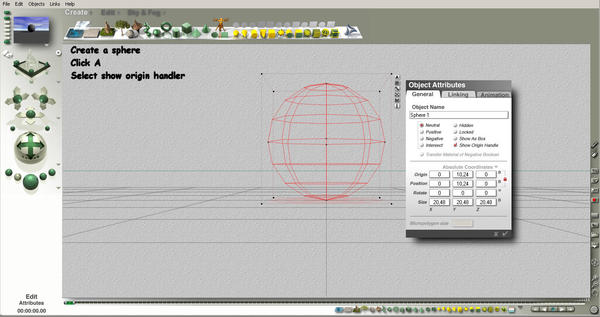

a.jpg
1363 x 719 - 190K
Post edited by Atlantis on


Comments
part 2
A even faster method..lol...
In fact you can forget the above tutorial ( how ever its also fun to do )
Then re-size the spheres if needed:
Like in the above tutorial you now can start copy this group as often you want and use the 3d disappear method to make it more
random looking... as said The sky is the limit.... in this case, Space is the limit.. :)
regards: atlantis
Nicely done :) I'll be creating an asteroid belt myself soon.
Sweet I need a new belt :)
Thanks, I wondered how it was done. I,ll try this method soon:-)
Thanks Erich for the tutorial. I would turn it into a short video with your permission.
It is nice to follow someone else's labours and just play. Here I made the asteroids (the material one of my own for asteroids that can be downloaded from Bryce5.com) - I used your instancing settings - worked a treat. Wiggled them around a bit with the randomisation controls and loaded in one of the Deep Space HDRI that Horo made with me. This looked OK but then I decided to play with Dan's fog material... a while later... I had a nice streaking effect in the belt. But contrast was lacking... so I rendered and saved HDRI and remapped using the Spherical Mapper to overlay a volumetric sun effect. By this re-combination I was able to add in more Bryce stars. But... the Spherical Mapper is not perfect for remapping using this approach so I put some masking in the lens of the mapper to blot out the poles (the black bands top and bottom) where the image got too badly distorted.
@atlantis....very nice tut., and it worked a treat also for me - have put this one in my fav’ folder as I’m sure I’ll be coming back to it again.
David...look forward to your intending asteroid vid. I know these are early times, but as to that light-band in which your asteroids lie...hmmmm???...I have doubts. Such views are seen alright in the fine dust particulate bands of Saturn and other like planets, but as to less dense asteroid belts, I’m not so sure. But then, you might have other ideas in where you're going to take it in terms of lighting FX's.
Jay
I duuno... I only have one defence, I am an artist not an astronomer! I just wanted something fancy.
It does look fancy, and appealing, too. Most of the people won't notice what Jamahoney rightly pointed out. There is also something like artistic freedom.
Ah, okay...shan't make observations like that anymore - simply thought it might have helped seeing that you were doing a vid on it. I only made the suggestion in that from your previous works, I thought you were after correct representations of a subject! But, no worries.
As to artisitic licence/freedom...I understand this fully as I worked several years as a free-lance artist working mainly in oils and watercolours.
Cheers
Jay
Oh I'm not saying I do not want to know. I'm just saying I didn't know. Space is a bit of a mystery to me. Horo is better versed in space imagery. I am more terrestrial. The reference images I was using were probably also made up. I suppose I should have looked for something by NASA?
I have in my mind’s eye an image of what you’re wanting to put across (forgive the presumption) – the asteroids blocking the light and producing dark radial-like rays with the brighter rays in between (a lovely effect if got right).
Your render also reminded me of the Voyager (Star Trek) opening theme – 1.08 minutes in), but as can be seen, it’s the density of the particles and ‘roids that is giving the band-like, ‘light’ effect. A recent image here accompanying research about asteroid belts turned up, too, but it pales really in comparison to yours (NASA needs to be hiring you :) ).
This whole digital imaging thingy is new to me, and while both it and actual painting with brushes have advantages and disadvantages each to them, the creative process, and artistic licence, will never change, I think.
Jay
I see what you mean... yes well, I did try a lot more asteroids, but unlike Peter http://www.daz3d.com/forums/search_results/e8dc511277ac0bfed01eb14f80039df7/ I lack the necessary patience with complex scenes. The problem for me is that I like to make very many tiny changes over and over again, and when scenes get heavily populated, the swap between labs starts to grind and in the end, I am thwarted because the whole process becomes too slow for me to make enough changes fast enough to get a sense of where the changes I am making are progressing. If that makes any sense?
I quite fancy having a go at something like this shot from the sequence you linked.
Changes and changes...oh yeah, know where you’re coming from there. It’s like writing an article, you put down the words in a sentence, they look correct after an hour or so in writing them. You then come back later to see how they look again, and you realise, hey, that’s the wrong word there, that grammar is wrong, too, I could have said that other part another way...SIGH. In the end, a whole new sentence has to be written, which again undergoes further self-critical analysis...AARRGG.
Yes, that’s the Voyager shadow effects I was thinking about – it’s quite a wonderful effect, isn’t it; it’s as if one can use the indirect properties of light to produce a totally different, dark-like effect.
Jay
If you have some knowledge about the subject you want to depict in a render, chances are that you come up with something that might be real, even though it is fiction. This is beautiful - but it also puts a limit to creativity. If you have something in your mind which is not based on some facts, because you're not aware of them, you may come up with something that has no bearing to any reality (as we know) but stir the imagination of the beholder.
If art was totally about realism there'd be very few artists. I think it's fine to try and reproduce something as exact as possible, but whose point of view is used to determine exactness? I think I'd just as soon do something to my own tastes and let others decide what they see.
With regards to the issue of "NASA" realism, Mr Brinnen's splendid asteroid field image reminded me of numerous artists' impressions I've seen accompanying astronomy articles / papers about planetary formation. It didn't take much of an internet search to find a similar result:
http://www.worldandijournal.com/subscribers/feature_detail.asp?num=26894
Which just goes to show that, with the aid of Bryce and his skilfully applied imagination, David can see quite a long way from his vantage point on the edge of the North Sea.
(The git.) :mrgreen:
I always try for accuracy when I can, but I love a great image, and yours looks great! Not being an astronomer, my take is that most wouldn't notice the inaccuracies.
I was just thinking of my daughter (the one with a history degree), who was TOTALLY DISGUSTED with the movie "Clash of the Titans", because it had, brace yourselves... a BLACK PEGASUS!!! She railed about the fact that there was no such thing as a black pegasus (I guess there WAS such a thing as a white pegasus, LOL!)
Thank you. As it happens if I look really hard, sometimes I can even see the sea!
So yes, you did manage to pick out one of the images I'd pulled up on Google to figure out how this scene should look. But what I couldn't tell myself just by looking was which images were artistic impressions and which were space photographs (if any?). Since such space photographs I have seen don't look any less real to me than many of the artistic impressions.
Also, I have been meaning to ask, and doubtless this is a daft questions but who is Mr Green?
For Cjreynolds, I offer this image I picked off the internet. To answer an argument about how Unicorns fly. Since Unicorns are not real, their wings are not real either, so they cannot generate lift in ordinary "real" air - the wings must be just be for show. The answer I discovered was rocket power. (And this also explains where rainbows come from - see image). Rainbows, also, are clearly not real. Given the "output" of the Unicorn shown in this technical diagram of one in flight - I also concluded that they must feed on fairies. Careful examination of the plate shows it to be a copy of an image from an early cave painting dating back to 40,000 BC and may well have provided the inspiration for Leonardo Dicaprio's helicopter sketches, basing the "aerial screw" on the mistaken belief that it was the rotation of the twisted horn that lifts the Unicorn into the air and that the rainbow is just an escape of exhaust gasses. It turned out though that it was all just a dream within a dream...
Had a go at something like the Voyager image...
Uses this model http://www.daz3d.com/shop/dsc-001
And the Spherical Mapper to provide quick recombination of HDRI backdrop and scene in Bryce. Gamma correction in PSP8
:lol: David that unicorn explanation was too much. Thanks for the laughs.
Yes, this whole ‘realism’ thingy is something I’ve been looking into since working with Bryce. It surely must be possible to produce an image of a concept that we can’t see. No? Just because we can’t put actual cameras there (e.g. inside an atom, at the outer edges of space), if we know about the actual, physical properties of an object and about the space in which they occupy (in the case of the atom we would know, say, it size, its orbit, how it interacts with another atom...etc.,, in the case of the asteroid we would know its makeup constituent, its reflective properties...etc.,), then it must be possible to construct a ‘realistic’ image view of such conceptual topics without actually knowing what they look like.
I’ve been experimenting with photo-realistic material lately concerning the face and then wrapping it onto a model mesh head (see below). To me, the human models available don’t present as entirely natural. So, to that extent I applied an actual photo of skin, eyes and lips to one of the head mesh models available just to see if in the end it would look, well, natural. The results were disappointing, and I still end up with an unnatural look. I mean, if I were to put a photo of a head alongside the virtual one created, it would be obvious which was the photo and which the rendered work.
What is happening here? Is it an issue of resolution, one of the skin’s properties, one of light, one of the material, one of bump properties, the mesh model itself etc.,? Or, is it that softwares are incapable of producing photo-realistic works? I don’t know.
Apologies here for including a head model into an asteroid thread, however, if David can include flying unicorns, then I think I’m safe...heheee ;)
Jay
@Jay: You left out perception. Perhaps faces don't look real because we each have an expectation when we see a created face. We believe eyes should look just so, ears the same, and mouths likewise. We even believe the head has to be a certain shape. Perhaps what we need to do is not interpret what we see but produce only what we see, leaving our perceptions on the shelf.
Guss...yes, very good point. There’s an old saying in the artworld that’s taught to nearly every new student venturing into the media art (well, it was in my days anyway) and I think it applies to what you are saying. Those wise words go: ‘Paint what you see, not what you know to be there!’ It's an easy saying to read alright, but then acting on it is another thing, I guess, as these days we 'see' (and I'm not only talking here about the visual side-of things) too much.
Jay
I would say lighting is the thing that is most noticeably detracting from the realism. I also suggest working with hands first rather than faces - faces are the most difficult of subjects because our brains devote huge resources into processing them.
Mr. Green was my landlord when I stayed in West Sussex on 1971.
The picture of the unicorn explains a lot. :)
You may try with a specularity map. Rashad did this a while ago and he came up with quite good results. Human skin transpires a bit and this can be emulated with specularity. What is also missing is sub-surface scattering, something Bryce cannot properly do yet.
David...thanks on the lighting and hands suggestion. I was been too presumptuous in thinking I could create an actual, photorealistic face from simply overlaying a real skin on a head mesh, so further experimentation required. Perhaps, I had greater aspirations also in being too Wittgenstein-ish “The face is the soul of the body”...phew...that one just flew right over my head ;) In reality, however, I would rather just push a button and have it all done for me :)
Horo...very nice images by Pesek – have come across one or two of his in the past. I recall others like Rob McColl who you’ll know did great conceptual artworks for Kubrick’s 2001: A Space Odyssey – still my favourite movie today; there was Chesley Bonestell’s too, Don Davies...and so many others.
Will look into the specularity map suggestion, however, at this stage I’m thinking I don’t yet have the necessary skills as digital art is new to me, let alone Bryce, too. It is still frustrating, however, knowing what you want to put across, but can’t because of lack of experience in Bryce, but, I'm getting better in finding my way around. Terms, too, are an issue I have - e.g. go to the IBL, set the settings in the TA, turn on volumetric, don't use a primitive here, do use a UV there...etc :)
Jay
Jamahoney, you make a very good point about our use of jargon. I will add to my "to do" list to make something that explains all the TLA's (three letter acronyms) and similar short hand concepts we casually throw around the forums. The last thing we want do to is put people off using Bryce by making the process seem needlessly opaque because of the lazy way we talk about things.